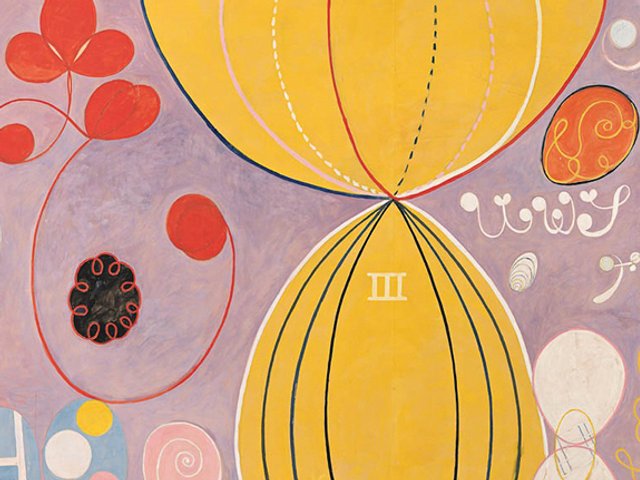Pre-pandemic, the Lenbachhaus in Munich approached Tate with an idea: why not share the crown jewels from each other’s collections in a couple of special exhibitions? Which is how Germany got a major J.M.W. Turner outing and Tate Modern is about to open its first show of Der Blaue Reiter (the Blue Rider) artists since the 1960s.
“It’s an incredibly sustainable way of working,” says Natalia Sidlina, the curator of Expressionists: Kandinsky, Münter and the Blue Rider. “Both in terms of collaboration, allowing us to engage on a deep curatorial and research level with specialists on both sides, and also in terms of the environment, since most of the works are coming from one place.”
One of the objectives of the London exhibition is to show that there is more to the early Modernist period than starry, solitary male artists. “So often we associate it with universally known figures such as Picasso, Matisse, Kandinsky, and rarely look at collective practices,” Sidlina says. Which is perhaps why Der Blaue Reiter—a progressive community of German Expressionist artists originating in Munich in 1909—is not better known in the UK. “We’re trying to change that by showing that Kandinsky, for example, was embedded in a much richer and more complex way of working,” Sidlina says. “So, we’re exploring his collaborations with performance artists, composers and musicians; his interest in photography, influenced by Gabriele Münter; his engagement with colour, informed by artists such as Franz Marc and Robert Delaunay; and more.”

Marianne von Werefkin's The Dancer Alexander Sacharoff (1909) Fondazione Marianne Werefkin; Museo Comunale d'Arte Moderna; Ascona
The exhibition will open with Kandinsky and Münter and follow them and other like-minded artists from Europe and the US as they connect in Munich and engage in collaborative work. It will explore key concerns at the heart of their creative experimentation—spirituality, sound, light, colour—and culminate with the legacy of Der Blaue Reiter artists and their lasting influence. “The difference between Blue Rider and many other Modernist groups is that it wasn’t actually a group,” Sidlina says. “There was no membership, no manifesto, no programme, no criteria for exhibiting. We’re talking about people who were affiliated through ties of friendship, intimate collaboration and a common quest.”

Franz Marc's Tiger (1912) Lenbachhaus Munich, Donation of the Bernhard and Elly Koehler Foundation 1965
As a result, the collective attracted a wide net of artists, performers, musicians and poets—with a 27-year gap between oldest and youngest—and produced a diverse range of bold and vibrant works. At Tate Modern, alongside familiar pieces such as Marc’s fiercely alive Tiger (1912) will be works by lesser-known artists such as his partner Maria Franck-Marc, as well as Marianne Werefkin, whose dazzling paintings London audiences might remember from the Royal Academy of Arts’ all-women exhibition Making Modernism in 2022.
“Of course, a big group show like Expressionists is standing on the shoulders of giants, and there have been a number of exhibitions that have introduced audiences to individual artists or specific sites and places,” Sidlina says. “For us, what’s important is to bring all those narratives onto the same page and to see what each artist brought to the conversation around creative experimentation and how that made Blue Rider the first transcultural European Modernist collective.”
• Expressionists: Kandinsky, Münter and the Blue Rider, Tate Modern, London, 25 April-20 October






